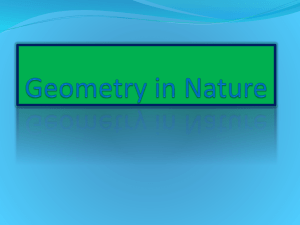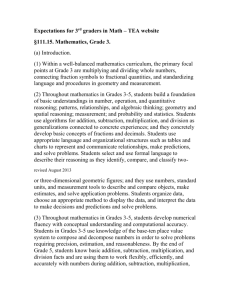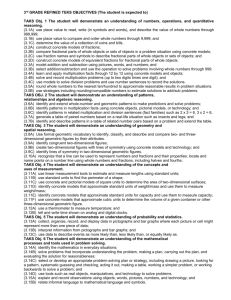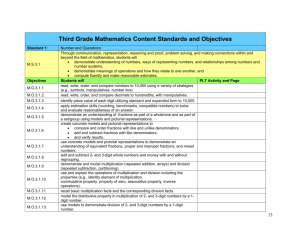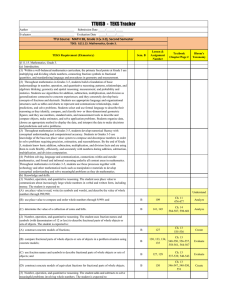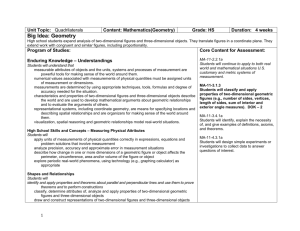3rd 9 Weeks Math Curriculum Sequence
advertisement
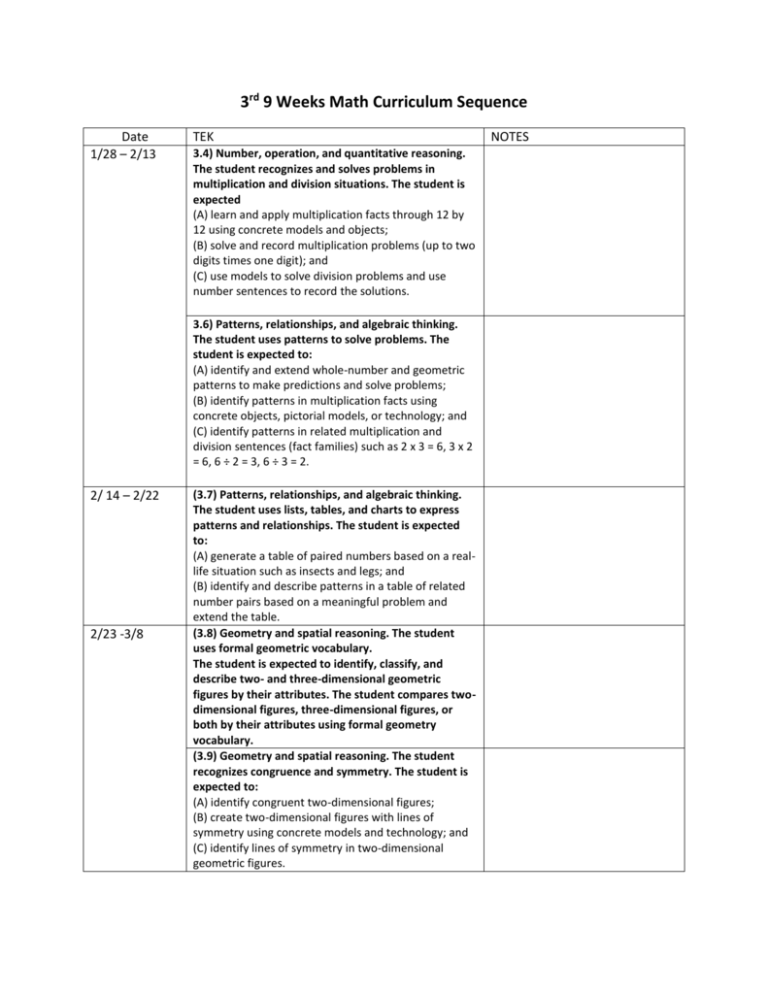
3rd 9 Weeks Math Curriculum Sequence Date 1/28 – 2/13 TEK 3.4) Number, operation, and quantitative reasoning. The student recognizes and solves problems in multiplication and division situations. The student is expected (A) learn and apply multiplication facts through 12 by 12 using concrete models and objects; (B) solve and record multiplication problems (up to two digits times one digit); and (C) use models to solve division problems and use number sentences to record the solutions. 3.6) Patterns, relationships, and algebraic thinking. The student uses patterns to solve problems. The student is expected to: (A) identify and extend whole-number and geometric patterns to make predictions and solve problems; (B) identify patterns in multiplication facts using concrete objects, pictorial models, or technology; and (C) identify patterns in related multiplication and division sentences (fact families) such as 2 x 3 = 6, 3 x 2 = 6, 6 ÷ 2 = 3, 6 ÷ 3 = 2. 2/ 14 – 2/22 2/23 -3/8 (3.7) Patterns, relationships, and algebraic thinking. The student uses lists, tables, and charts to express patterns and relationships. The student is expected to: (A) generate a table of paired numbers based on a reallife situation such as insects and legs; and (B) identify and describe patterns in a table of related number pairs based on a meaningful problem and extend the table. (3.8) Geometry and spatial reasoning. The student uses formal geometric vocabulary. The student is expected to identify, classify, and describe two- and three-dimensional geometric figures by their attributes. The student compares twodimensional figures, three-dimensional figures, or both by their attributes using formal geometry vocabulary. (3.9) Geometry and spatial reasoning. The student recognizes congruence and symmetry. The student is expected to: (A) identify congruent two-dimensional figures; (B) create two-dimensional figures with lines of symmetry using concrete models and technology; and (C) identify lines of symmetry in two-dimensional geometric figures. NOTES


